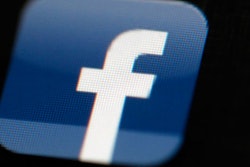The issue of sustainability has never been more prominent.
Around the world, headlines are full of warnings on the dangers of climate change as companies, people and governments campaign for greener policies and practices. One of the sectors most affected by this drive is chemical processing and manufacturing.
Every year, more than a thousand new chemical substances are introduced into the U.S. For each one, the potential applications need to be weighed against myriad potential health and environmental impacts across a broad range of metrics, such as energy consumption, toxicity or biodegradability across product lifecycles.
If chemical processors and manufacturers are able to shift toward more sustainable practices – e.g., processes that are more energy efficient, require lower input volumes and are more environmentally and biologically-friendly – the benefits for both the industry and the environment would be significant. Machine learning may well become the technology that enables this shift and supports the drive toward more sustainable practices.
Making A Change
Embracing sustainability is a smart business move for two reasons. First, awareness and concern about the issue has never been higher, and far more information about the ripple effects of industrial output is available than ever before. The wider impact of chemicals on ecosystems, such as the effect of pesticides on bees, is now part of the mainstream consciousness, making consumers more attentive about the environmental impact of their purchases. Indeed, recent research from Nielsen found three out of four millennials would pay more for sustainable goods.
Second, many chemicals or manufacturing processes today rely on fossil fuels which, over time as supply continues to decrease, will become less available and more expensive. The chemicals industry is responsible for nearly a third of all energy consumption used in American manufacturing.
Therefore, given the recent volatility of the fossil fuels market, this rate of consumption means that more sustainable energy is not just an environmental concern, but also a commercial one. By making the switch now, companies are able to tackle the issue before it becomes too severe.
Making Sure The Sums Add Up
However, while sustainability is a popular move with numerous business benefits, it’s vital that the introduction of such measures also make short-term economic sense. Sustainable chemicals and goods need to be affordable, effective and available. Sadly, right now, many industrial chemicals in regular use do not meet these criteria. The solution is faster and more efficient research into how new chemicals and processes can be made more sustainable.
However, sustainability is not a linear metric, especially when it comes to chemical manufacturing. For example, altering one part of a process to be less energy-intensive may result in more toxic by-product. For example, at the production stage, paper bags require 100 times more water to produce than plastic ones, as well as using four times as much energy and creating 70% more pollution. These trade-offs show that sustainability cannot be considered on a single metric alone. Issues such as water consumption must be weighed against others like biodegradability.
Before implementing any improvement, researchers must map out the ripple effects to understand the overall environmental impact. This is precisely the area where machine learning can help put companies ahead of the game.
Research By Robot
By using machine learning tools that are able to create thousands of virtual experiments based on input data, researchers are able to ‘game out’ and then model the impacts of various changes to processes or chemical compounds, far more quickly and cost-effectively. This is especially valuable during the early stages of R&D. The importance of machine learning is greater when considering the urgency around issues related to climate change.
Working alone, human researchers are incapable of processing the required amount of data in order to achieve the requisite innovations fast enough – particularly given the data overload facing chemical researchers today. In contrast, intelligent machines are capable of absorbing and analyzing vast amounts of information simultaneously, to help project both the success rate and possible environmental impact of potential innovations. Already, companies like Atomwise and Zymergen are using such tools to create breakthroughs.
So, the question is how to make machine learning as effective as possible? Like any research system, it is dependent on access to and input from the latest and best available data – without this, the margin of error for computations increases dramatically. Therefore, it is critical to ensure that a comprehensive repository of verified, cross-domain and trusted data are at the foundation of any machine learning system; so that the insights produced are accurate, based on real data and are actionable. Machines and researchers are only as competent as the data they are working from.
Machine learning is the key to speeding up the pace of sustainable, cost-effective chemical and manufacturing innovation. In order to get the most out of machine learning investments, manufacturers must invest in providing access to all the relevant and reliable existing data.
Despite their ability to learn and improve their own performance, machine learning tools suffer from the same problems as all computers – they are only as good as the data they are fed. If they are making calculations based on erroneous data, machines will produce incorrect results. Therefore, the quality of data input is critical if machine learning is going to fulfill its promise to be the heart of breakthrough sustainability research.





















